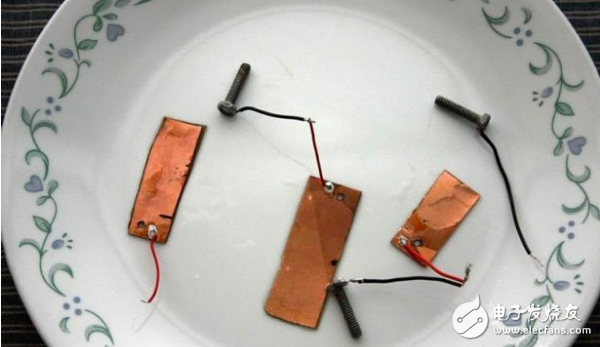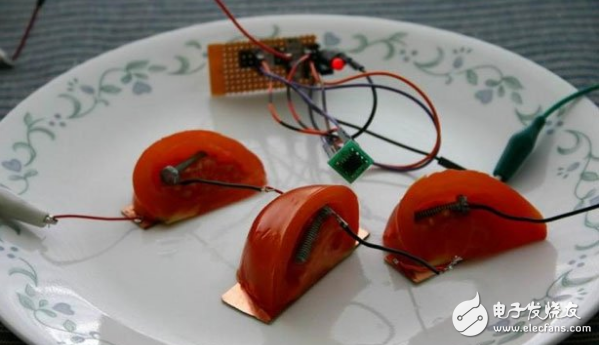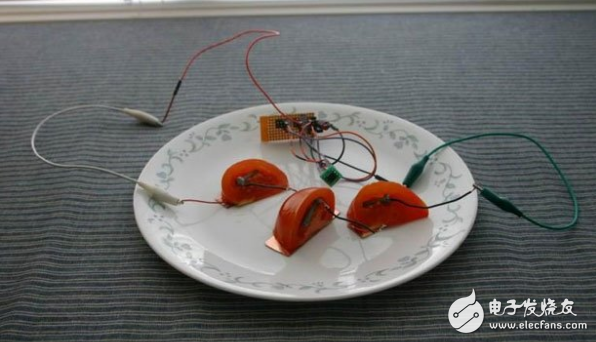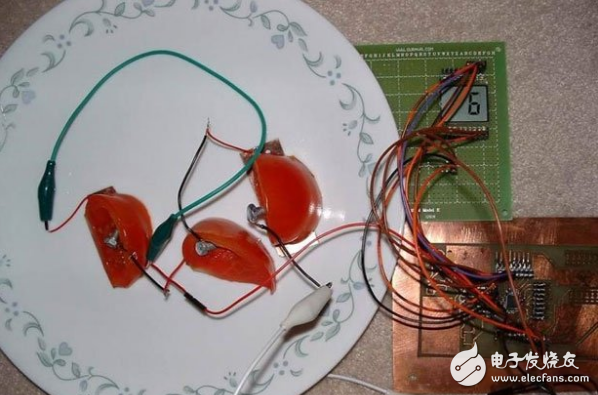Originally, the fruit battery-driven LCD was just a gimmick at the show. The power of three lemons should be enough to drive the LCD. However, when using Mega8L to make a circuit but not using a fruit battery, I decided to practice it myself to see if the fruit-powered AVR microcontroller could succeed. This can verify some understanding of the design of low-power single-chip microcomputer; while on the project with MSP430 on hand, the prototype has been done for a long time, I feel that MSP430 is not good (not only expensive, we have to maintain two sets of platforms), I want to change Become an AVR. The MSP430's power consumption is really low, and the prototype of the three-section five-nickel-cadmium battery is used for more than a year.
Hardware: Mega88, 32KHz external crystal oscillator, 2 times negative piezoelectric routing AVR PWM driver, LCD is a static pen-end LCD, directly driven by Mega88 IO port, no time-sharing scanning.
Software: The LCD display is refreshed every 2 seconds in the Timer0 interrupt service routine, and the AVR works in idle mode. Timer1 provides a PWM waveform to drive a 2x negative voltage circuit.
Measurement data: When the circuit is working, the fruit battery voltage is 2.5V, the whole machine current is 30uA, and the 2 times negative voltage provides the voltage about -3V.
Like MSP430 to do low-power design friends, welcome to come to the brick. This is the electrode of the fruit battery, the anode is the copper clad plate for the PCB, and the cathode is the galvanized screw. The above electrodes were immersed in three water cups dropped through the vinegar. I found that the capacity of the fruit battery can reach: no-load voltage 3V, short-circuit current 400uA. This gives me the confidence to demonstrate a fruit-powered AVR microcontroller.

Fruit cell electrode
I used Mega8L to make a circuit that drives a static pen-end LCD that works with 2 to 3 cells, but not with a fruit battery. The original Mega8L nominal minimum operating voltage is 2.7V, and can actually work to 2.5V. The fruit cell voltage was pulled to 1.9V and the current was 60uA. The capacity of the fruit battery was small. I didn't take the time to improve the fruit battery, but I wanted to improve the AVR further. So I first used Tiny13 to do a flash LED experiment, successfully verifying the possibility of fruit powering the AVR microcontroller. Tiny13 is capable of working up to 1.8V. The LED is Fairchild's HLMP-D150, which is better than ordinary LEDs at low currents. In fact, when the LED is lit, most of the power consumption is on the LED.

Tiny13 drive LED flashes (bright)

Tiny13 drive LED flashing (off)

Fruit battery after one week
I want to replace Mega8 with AVR chip of PicoPower technology like Mega88P. The working current is smaller than the previous generation, and the working voltage can be as low as 1.8V. I finally received the Mega88 from Armok. Although the Mega88 and Mega8 Pin-pin are compatible, they are slightly different from the Mega8 registers, and the code must be recompiled for the Mega88. The LCD is lit at 3V, but the LCD is completely dull at 2.3V. The original LCD was designed to work at 5V, so it installed a 2x negative voltage circuit to drive the voltage doubler circuit with a symmetrical PWM wave.

Mega88 drives LCD display numbers 0-9
Static Frequency Connerter With Threephase Output
Variable Frequency Inverter,Variable Frequency Converter,3 Phase Frequency Converter,Frequency Converter 60Hz To 50Hz 3 Phase
Jinan Xinyuhua Energy Technology Co.,Ltd , https://www.xyhenergy.com